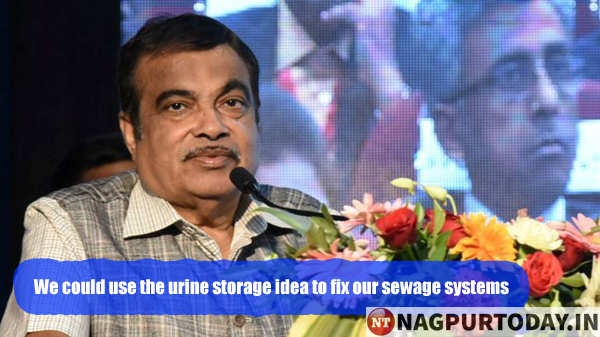Nagpur: Addressing a gathering of young innovators at the Mayor Innovation Awards function of the Nagpur Municipal Corporation, Union Minister Nitin Gadkari said that if all the urine we produce is collected, enough urea can be produced and we can stop importing urea for our farming needs.
Human and animal wastes have been used as fertilisers in India and the world over for a very long time. However, the question that Gadkari has raised is the commercial use of urine as urea.
Before answering that, we need to hold our noses and take a deep dive into urine, to see if there is more to it than just the elimination of waste. Simply put, is there money at the bottom of the chamber pot?
For starters, any urine report will show you that it contains 95 percent water and 3 percent salts such as potassium, calcium, ammonia, sodium, phosphate etc. The remaining 2 percent is urea, which is a proxy for delivering nitrogen to the soil. In essence, urine has all the salts that chemical fertilisers deliver – NPK (nitrogen, phosphorus, and potassium).
The water in urine acts as a good delivery mechanism for providing the plants with the fertiliser. Researchers have found that nutrients in urine are in just the right form for plants to drink.
The Journal of Agricultural and Food Chemistry has published the works of environmental scientists Surendra Pradhan and Heli Heinonen-Tanski of the University of Kuopio, Finland, who have studied the application of urine. According to the report the scientists planted four plots of beets and treated one with mineral fertilizer, one with urine and wood ash, one solely with urine, and one with no fertilizer, as a control.
After 84 days, about 280 beets were harvested. The beetroots from the urine- and urine/ash–fertilized plants were found to be 10 percent and 27 percent larger by mass, respectively, than those grown in mineral fertilizer. By subjecting some of the beets to chemical analysis, the researchers determined that all of them had comparable nutrient contents—and according to a blind taste-testing panel, their beety taste was indistinguishable.
Gadkari is therefore absolutely right about urine. The scientists mentioned above say that it is totally possible to use human urine as a fertilizer instead of industrial fertilizer.
Why then has the world not moved to use urine, available freely in copious quantities, rather than depend on chemically produced urea? The problem lies with the collection of urine.
Urine is sterile when it leaves our body but it starts to putrefy when exposed to air and breaks down into ammonia and carbon dioxide which are mainly responsible for the odour. This also causes various complications when they are transported through pipes.
Sweden, which has taken the lead in using urine, had to rework its entire sewage system by using porcelain in certain areas. But scaling it up and getting it to industrial scale is a very costly exercise that even environmentally conscious rich Scandinavian nations have not done.
A back of the envelope calculation shows that in order to fulfil Gadkari’s dream India will have to urinate 300 million tonnes to produce 6 million tonnes of urea a year (2 percent of urine by volume), which is the amount of urea India imports. India with its enormous population has a competitive advantage in urine production. We urinate more than what is needed to satisfy our urea needs, but the problem is in diverting it to the farms safely. International experiments in using urine have worked in limited areas.
What then should be our policy on urine? Or as Hamlet would probably have said, ‘To pee or not to pee, that is the question.’
Rather than storing urine at airports, which Gadkari has asked his team to do, setting up sewage systems in towns and villages near farms will be far more useful. In any case the villages and smaller towns have pre-historic sewage systems, they surely can do with a new one, which will have urine collection as a bonus.
By Shishir Asthana as Published in moneycontrolcom













